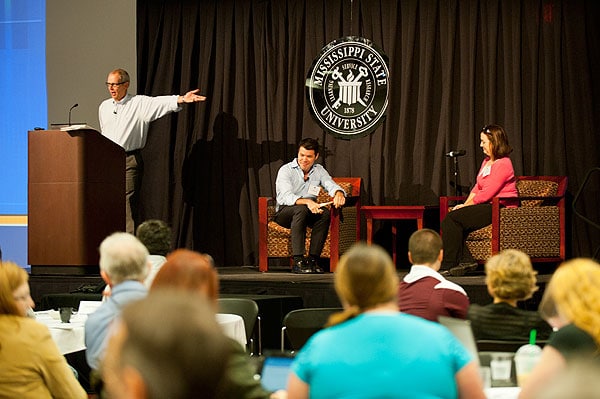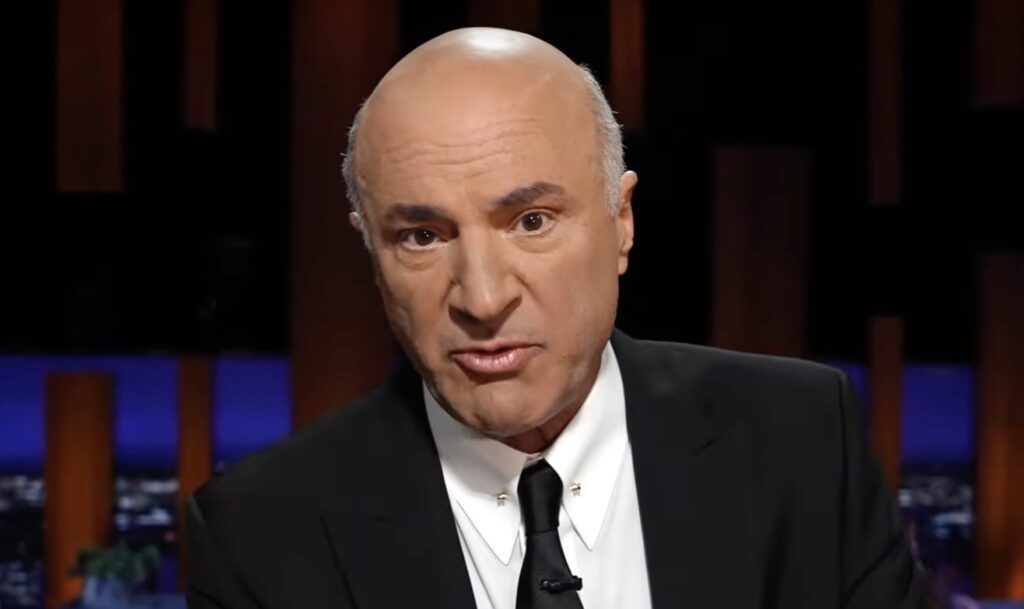Yesterday I arrived in Las Vegas, Nevada, for another installment of an enterprise to which I’ve been increasingly devoted over the last year: Training scientists in communication, public engagement, and media outreach. Working with the National Science Foundation, but also sometimes on my own, I’ve now probably been involved in training over a thousand scientists in these, er, “arts.”
In this, I’m just one part of a much broader communication and outreach wave that is sweeping the science world. This wave, in my view, has built up for two related reasons: 1) ongoing frustration in the research community over the failure to get its knowledge “out there”—successfully disseminated—especially on controversial subjects like climate change and evolution; 2) the decline of science coverage itself in the traditional media, and the concomitant rise of the new media. This development is both exhilarating and also rather terrifying, because it increasingly places the scientist him- or herself in the position of serving as a direct-to-public communicator, rather than in the old role of communicating through an intermediary (the journalist).
My co-authored 2009 book Unscientific America noted these trends and called for greater outreach efforts—and now, I’m also heavily involved in trying to realize the vision. As a result, I think it’s worth laying out some conclusions I’ve drawn so far from the “sci comm” training enterprise, as well as to describe what appear to be the next steps. (This is also something I’m going to be talking about more at two conferences coming up: The Soil Science Society of America annual meeting in San Antonio in October, and the Fall Meeting of the American Geophysical Union this December in San Francisco.)
To me, the key tension at the center of this exercise is between “theory” and “practice.” And we have to ensure it’s a productive one.
Any good science communication training event, or curriculum, will include elements of both theory and practice. But there is vastly more theory out there than you can usually cover, and any training—especially if your time is limited to a few days, as ours are–must largely focus on the practical.
And yet we can never forget that theory must inform practice—indeed, theory could potentially significantly revise practice.
The central question thus becomes: As modules across the country and world develop to spread knowledge about the practice of science communication, at what point do we need to build in an entire “Level 102” that does a better job handling the theory? And indeed, while the “practice” is generally more stable, the theory itself is always growing and changing. That’s because scientific knowledge itself is increasingly rapidly about what we might call the psychological dynamics behind science communication–to the point where some researchers are proposing a “science of science communication” that is definitely not a part of our current trainings.
How do we take this into account? That’s the question I want to address, but first, let’s say more about what these two elements, practice and theory, comprise.
The Practice. This is what, at least with NSF, we spend most of our time on. It ranges from what I call “jargon-busting”—teaching scientists not to use words that only they understand—to emphasizing the core need to design a message in a strategic way, rather than a haphazard one, and how to do that. It also comprises the “rules of engagement” for interacting with those old media journalists still trolling around, and the “rules of creation” as scientists venture into direct communication with the public, often using new media: How not to induce “death by PowerPoint” in the audience, how to make a video, how to create a blog and Tweet, and so on.
Some of these elements of “practice” are unlikely to be changed by anything that happens in the realm of “theory.” For instance, I can’t see any possible world in which psychology is going to teach us that using jargon is actually a good way for scientists to reach non-scientists. Nor can I see any world in which having a disciplined message is not going to be better than an unorganized data dump.
Theory. The “theory” of science communication encompasses a variety of different elements, and is interdisciplinary in nature. It includes “models” to describe the scientist-media-public interaction: What are the channels of communication, how is the message encoded, transmitted, decoded, and so on. It involves normative debates about what the goal of communicating science to the public actually is. It involves analyses of science communication efforts—what “frames” are used, and how do they influence media coverage and public opinion?
But I think that even in the realm of theory, this is rather standard stuff, and doesn’t much get at the really deep developments that are coming.
This sort of dawned on me last week, when I came across a paper in Climatic Change purporting to demonstrate, using the Myers-Briggs Type Indicator, that scientists have different personalities than members of the general public, and that this deep seated difference impairs communication. It has also been dawning on me as I survey all the growing research on motivated reasoning—how subconscious emotional impulses and moral values drive our interpretations of technical information, particularly in contested areas, and how opening people up to new knowledge often has far less to do with delivering the facts than getting their defenses down, through practices like, say, self-affirmation.
This is a young and burgeoning field, but already it is clear that psychology and cognitive neuroscience are going to tell us much more than we currently know about which types of messages actually reach people, which types of people actually make good messengers (to what types of people), and so on. Frankly, I see us heading into a world in which we will develop a “science” that is capable of explaining, at the level of the brain, why certain narratives or “frames” provoke emotional responses in audiences that not only engender more openness to information, but also motivate people to take actions. We’re talking about the “Yes, We Can” model of science communication.
Integration. Some aspects of the “standard stuff” about science communication theory—and a few morsels of the less standard stuff—get into current science communication trainings. For instance: I now realize that when I do mock interviews with scientists in which I play Stephen Colbert, or when Alan Alda does improv comedy trainings for scientists, we’re essentially playing a game that turns on emotion and personality. We’re tossing Myers-Briggs “thinkers” into the deep water of “feeling” and showing that there is a different and more engaging form of communication than the wonk-technical. (I say this even though I have caveats about the Myers-Briggs approach and the research in this area. But I am nevertheless pretty certain that we are going to find broad personality differences between the average scientist and the average member of the general public.)
So far, though, the more cutting edge theory is not influencing—that much—the science communication practice. At least not that I can see. We need to take that much farther. There ought to be a Science Communication 102 level curriculum to complement the practical, training-oriented approaches. I know some universities are moving in this direction—that should continue.
Ultimately, what does a “science of science communication” look like? Maybe, something like this.
Picture a targeted audience, whose broad values are known, being reached by a scientist-communicator who begins with an emotional appeal that resonates with those core values. The scientist-communicator makes sure that the audience feels—not thinks, but feels—agreement, affirmation, and shared ground with the speaker before delivering any information, especially controversial information. Then the presenter goes on to embed scientific information in a narrative that follows a dramatic structure and leads to an emotionally satisfying resolution. The audience then “responds”—heart and head, except of course, all of this is actually in the head–and the connection is perfect.
Some of the best science communicators already do precisely this, by instinct. But in the future, science itself will be able to tell us who they are, and why what they’re doing actually succeeds.
And ultimately, we’re going to have to teach science communication accordingly.
Subscribe to our newsletter
Stay up to date with DeSmog news and alerts







